CityFight: Modern Combat in the Urban Environmentis a game designed by Joseph M. Balkoski and Stephen A. Donaldson and published by SPI in 1979. This game first caught my attention when reading a post on BGG that revealed the secret punk rock connection with this game.
When Peter P. offered me the chance to play this game at our local “Stack Académie” game day, I was pretty excited. We agreed to limit ourselves to the basic rules for our first game. I have little experience with the old SPI classics, but what struck me, was how clear the rules are presented. Reading through them, it is easy to visualize the game sequence and understand the various mechanics. The rules aren’t too dry either, with some hidden gems, as for example rule [44.23] in the Civil Strife section: “Irregular units may not execute indirect fire; they may, however, execute the mayor.”
On key aspect of CityFight is the double-blind setup. What this means is that two identical maps are used and each player sets up his force on his own map. A screen (and the game box works fine for this) seperates the two players. Certain contorsions must however be made during bathroom breaks to avoid peeking at the opponents’ map.
So how does this work?
At the beginning of each turn, players place certain orders on their units. There are 3 types of orders: movement (cautious or bold), Fire and Search.
Each squad is allocated a certain number of action points, which can be modified by a DR compared to the squad’s leadership capacity. During the action phase, each player in turn, spends an action point so that the units can perform the orders given. Cautious movement and Fire orders also permit squads to perform one search action.
Searching is the heart of the game. When a megahex (a collection of 7 hexes) is searched, all units in the open are spotted. A successfull DR must be made to spot units in buildings or woods. Some on-lookers at are game made the comparison with “BattleShip”, and yes, it could be compared. If the boats were moving and had the ability to fire right back at you.
My first game: Scenario 53 “Breakout!”
In this scenario, my two russian motor riffle platoons are holed up in the Old Village, in the heart of Gerlafingen, an imaginary small town in Western Germany. The cold war has heated up and the two super powers are at each others’ throats. My two platoons must manage to exit the map without suffering two many casualties. This is easier said than done, as a reinforced american company is working hard to prevent it.
Russian setup
Turn 1
Platoon M, under platoon leader Ivanov, starts to carefully cross the Kaiser-Wilhelm Brucke, while platoon K and leader Garnov start heading south towards Der Burshenhain forest. Even though the americans are actively searching every sector, no russian units are detected.
Turn 2
The russians perform a few searching actions to try to throw off the american pursuit, looking in the opposite direction than the one they are headed for. Sgt Garnov gets lucky and spots enemy activity in 4K6.
Searching in CityFight
When a player spots an enemy, the opponent is under no obligation to tell him the number or strength of the spotted unit, so my russians have no idea what is hiding in that building.
Searching gives some intelligence to the enemy as the DR is modified for the number of soldiers searching and the distance to the hex searched. The searching player can also decide to call out a DR lower than his actual result so as to hide the location and strenght of the searching party.
The calling out of searched megahexes builds tension as you feel the opponent getting closer, it’s almost like sitting in the dark and seeing that big searchlight inches across the courtyard towards your hiding place.
End of turn 2, squad K:
End of turn 2, squad M:
Turn 3
Russians are slowly making their way to the map edge. The spotter, which does not count for VPs is sent north to try to throw off the american efforts.
Turn 4
Platoon leader Garnov’s men reach the woods, and start to feel a little safer. The spotter is quickly found by the american search teams in 7E5 and suffers the first fire attack in the game. This 2-man team comes out unscathed and manages to spot an american unit in 6F4.
Turn 5
The third Squad in Platoon M hasn’t gotten across the bridge fast enough and is caught in open ground. Under heavy machinegun fire, the men are suppressed and can no longer move or perform any other actions. Unfortunately he is cut off from leader Ivanov, making recovery from suppression very difficult.
The spotter on the other had is KIA when spotted while trying to exfiltrate through the woods.
Turn 7
The squad in 6F4 was kept suppressed by american firepower and was KIA on turn 7. The american knows that two of my units have been killed, but doesn’t know which ones. The russians are confident though and on turn 7, platoon leader Ivanov and a squad are exited by the Schillerallee leading to Die Akademie.
Turn 8
The remaining units of Platoon M are slowing down and using cautious movement as search activity is pretty heavy in the area:
Carefully preparing to cross the Adenauerbruck bridge:
American situation in North East at the beginning of turn 8:
The South West escape route is also heavily guarded:
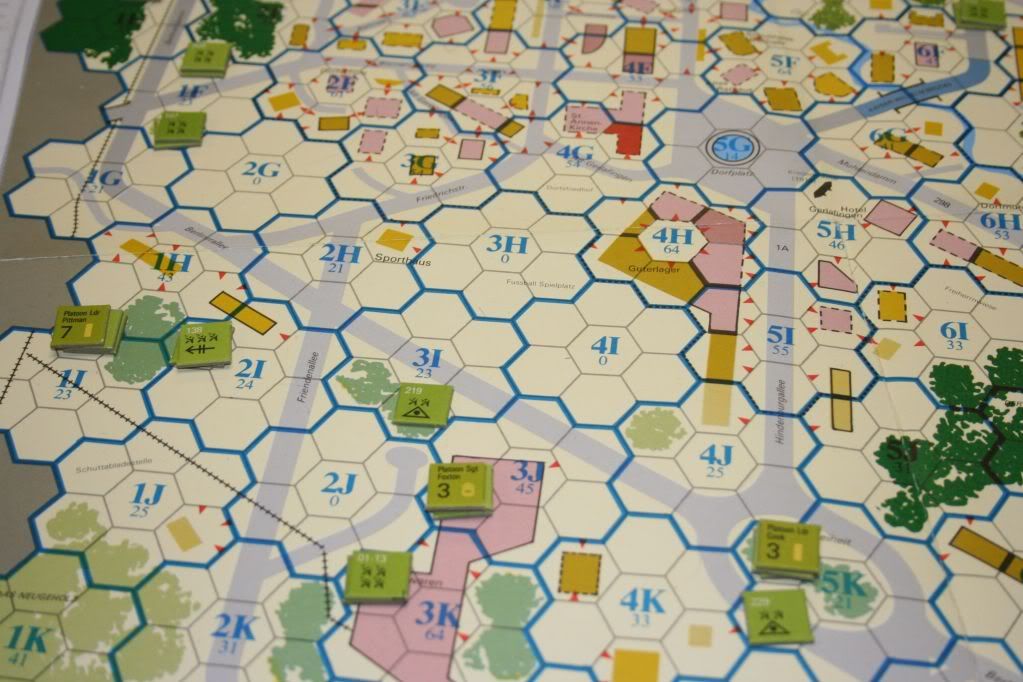 South East corner. What is amazing is how the russians were able to slip past the spotter posted at the entrance of the bridge in megahex 6L:
South East corner. What is amazing is how the russians were able to slip past the spotter posted at the entrance of the bridge in megahex 6L:
Turn 9
Platoon Sgt Karlonsk and the remaining squad from platoon M take cover in a building, slowing down his exit from the map. The americans are searching the area and it is a bad time to get caught in open ground.
The buildings in CityFight can only be entered by “accessible” hex-sides, denoted on the map by little red triangles. Unlike in ASL, where buildings can be entered and exited by most sides, the buildings in CityFight sometimes only have one door. This makes planning a path through buildings more difficult and more time consuming. On the other hand, it greatly adds to the realism of the design.
Turn 10
Squad K:
Squad M:
All squads are issued bold movement commands as it is now the last dash for the map edge. The russians are lucky as the american search pattern barely misses them. I hold my breath as megahexes 9G, 8H, 6L and 7M are searched.
In the North West corner of the map, Co Commander Strummer is scratching his head and wondering where those pesky russians went:
Turn 11
On the East map edge, Sgt Karltonsk exits the map with his squad. This platoon has lost a spotter and a squad but just earned 20 VPs.
On the south edge, Sgt Chankin, staked with a squad, makes it out successfully. Adding another 10 VPs for the russians. Platoon leader Garnov and another squad are hiding in the Volkstheater when an american search of the megahex is called.
Fortunately it is unsuccessfull. I try not to smile too obviously when I hear my opponent mutter “spotters suck!”. Paradoxically they do. There is a negative -20 DRM when searches are performed by spotter alone. This greatly decreases their usefulness in the basic game.
Turn 12
Another russian squad is exited off the map. We decided to call the game a russian victory. I have to say that the american’s job was a lot tougher than mine. It was a bit like trying to find a needle in a haystack. As the russian, I had no incentive to seek out and engage the enemy,my job was to get out as quickly and quietly as possible. The american on the other hand had a lot of ground to cover.
As commands are issued at the beginning of the turn, it can be difficult to improvise and adapt to changes in the battlefield, which means that the commander has to keep units in reserve, make sure that some units are prepared to bold move or fire, while others are searching. The command point system and leader capability also serve to hinder the “god-like” aspect present in many wargames and add a level of uncertainty.
Final thoughts
SPI’s CityFight is a tense game. In this game, there was very little contact between the opposing sides, yet their presence was felt at all times.
This game seems to be a pretty accurate simulation of the uncertainty and fog-of-war that would be present in a modern urban conflict. Unlike most wargames that give players omniscience over the battlefield, CityFight leaves you almost completely in the dark. Turns can be deadly quiet, almost boring, and all of a sudden, a firefight breaks out. This sounds a lot like reports from actual veterans.
I really enjoyed this game and I’m looking forward to get a chance to play again and experiment with some of the more advanced rules.
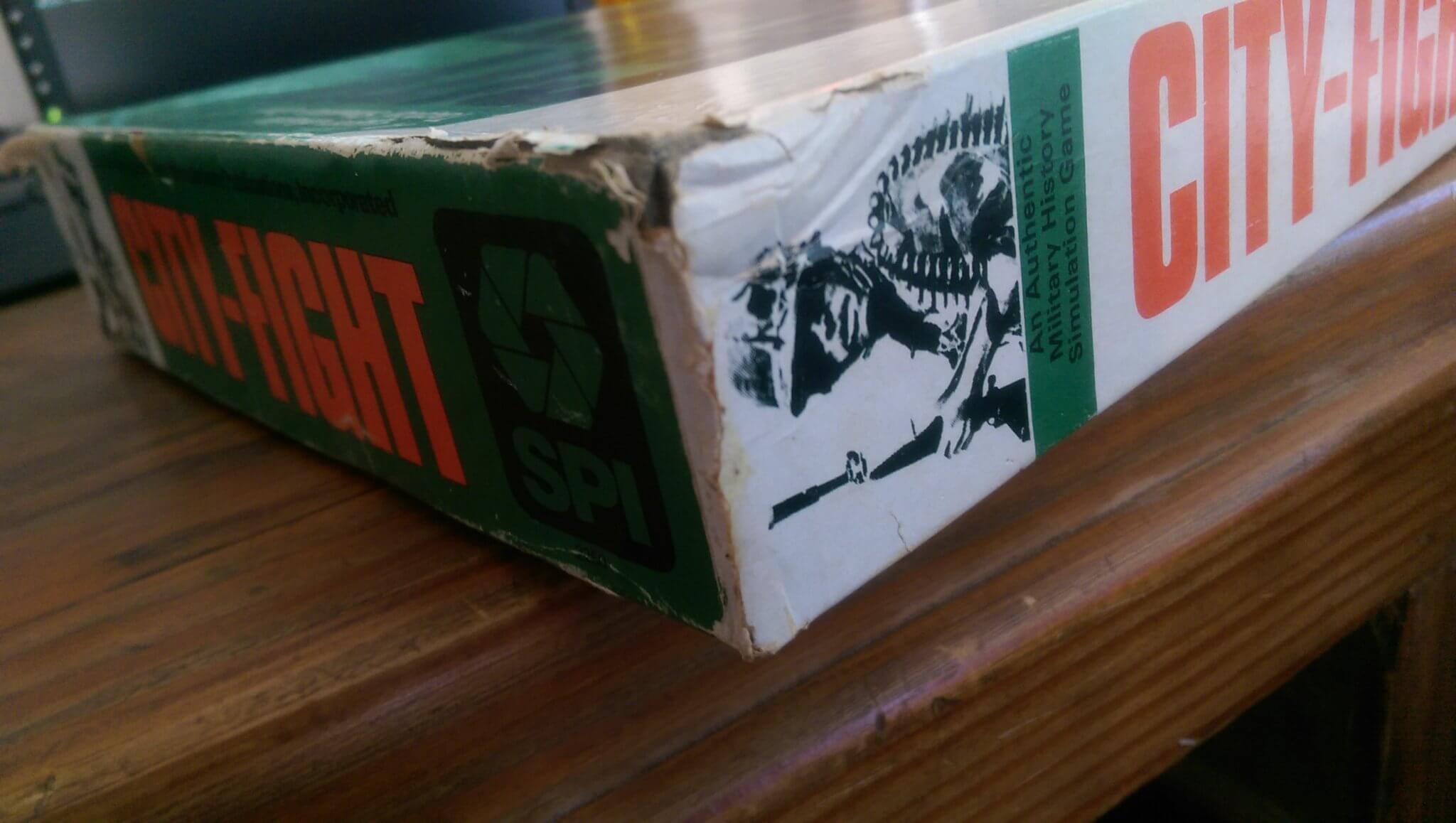
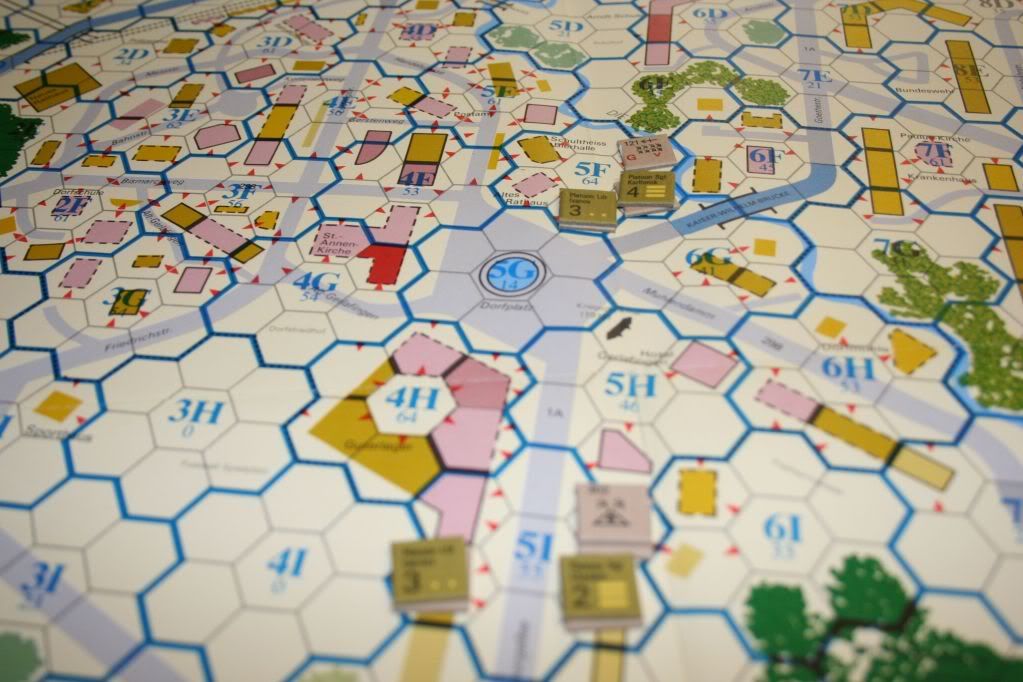
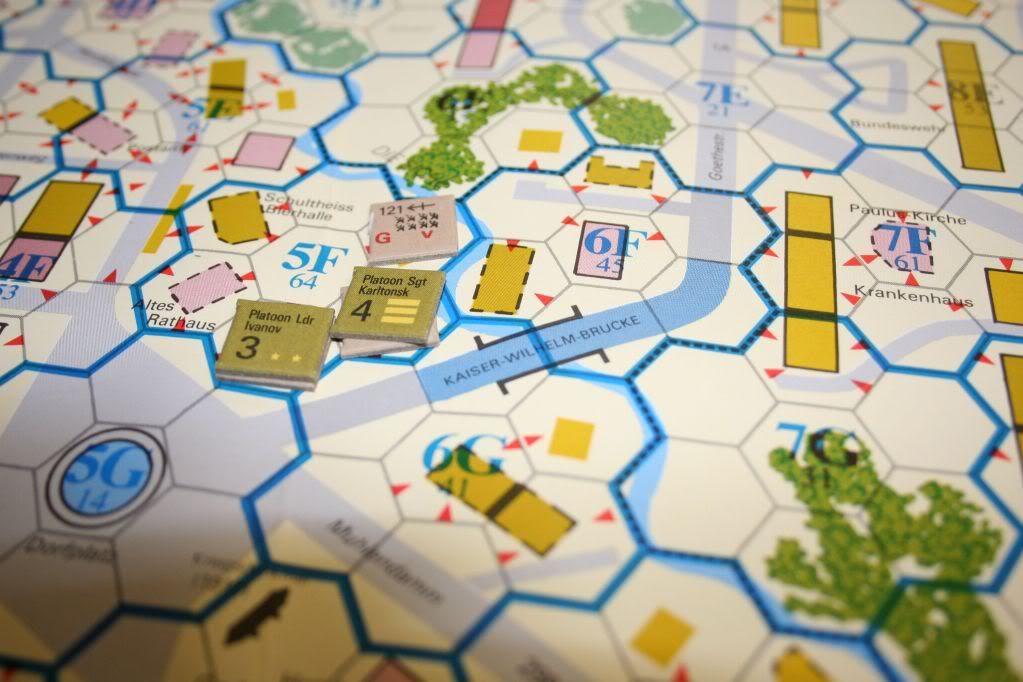
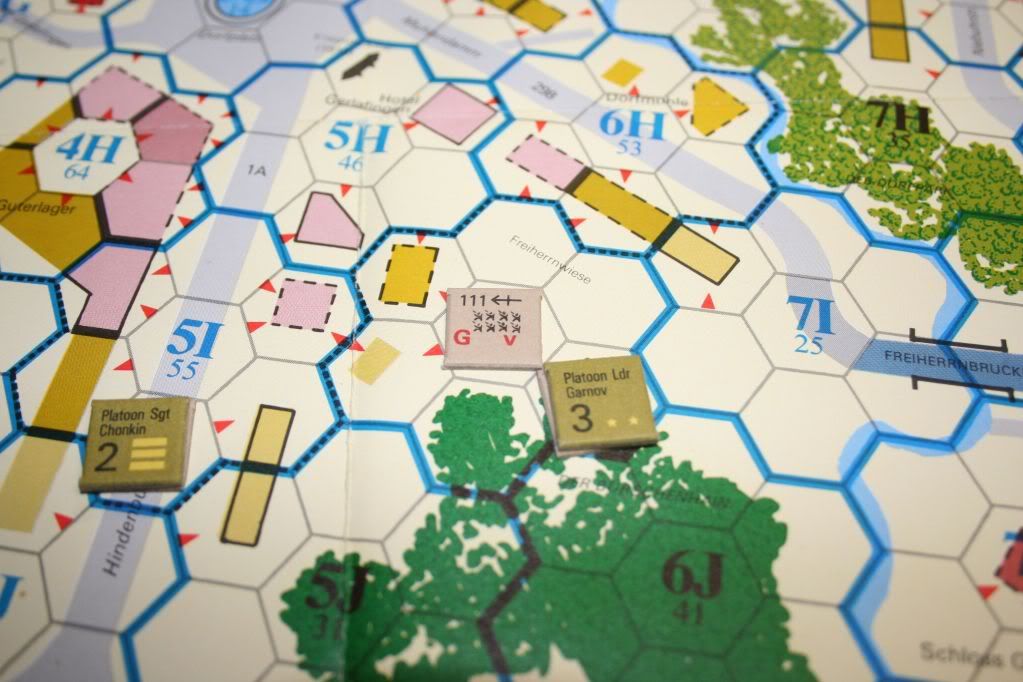
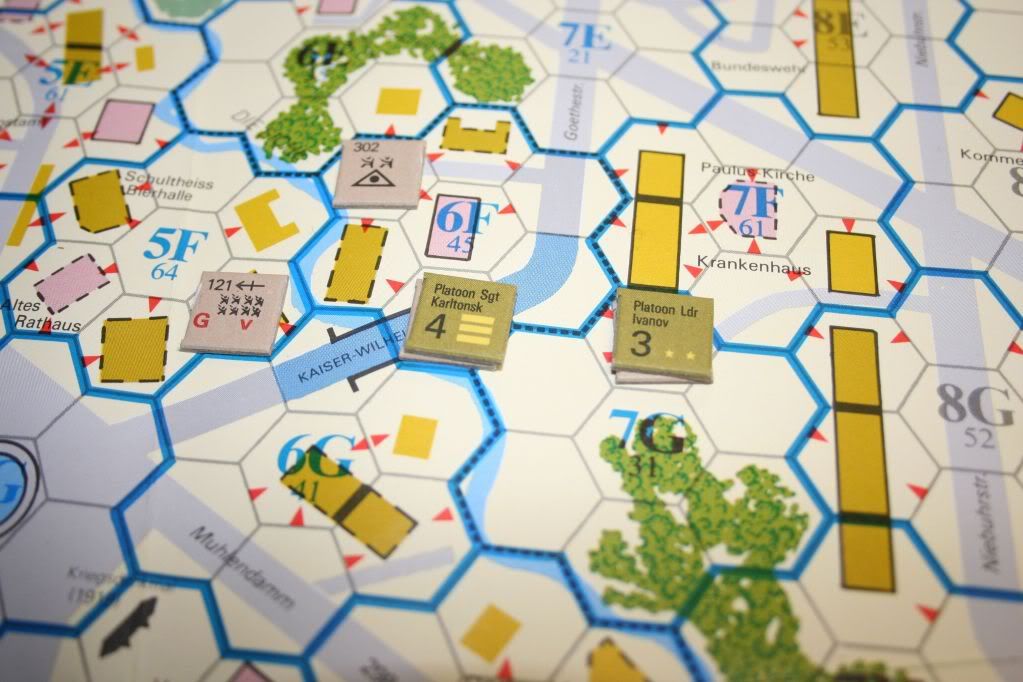
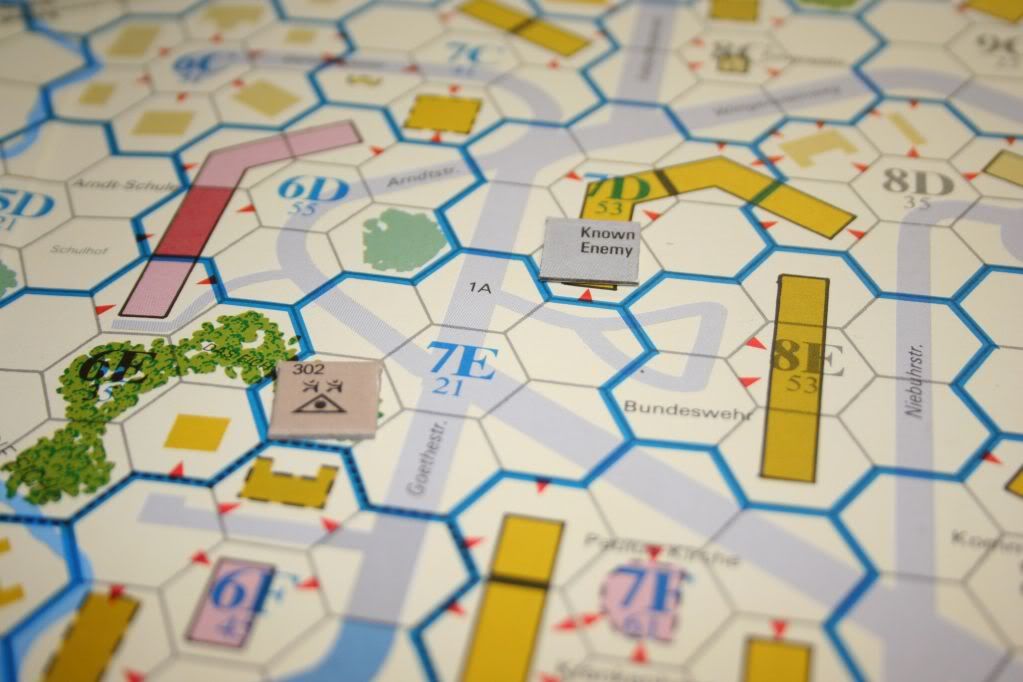
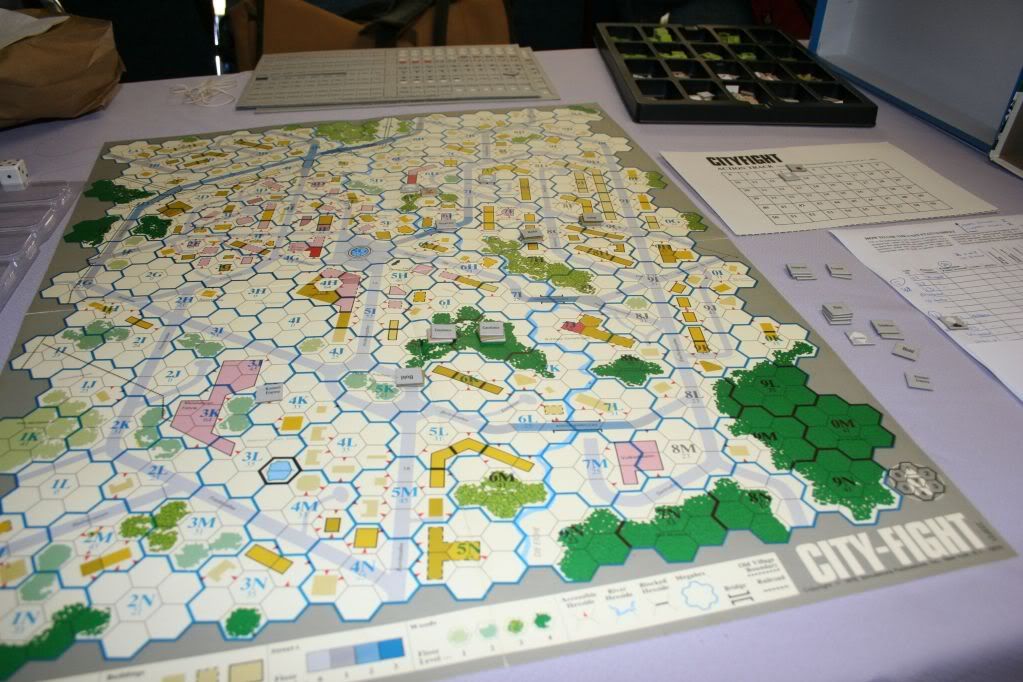
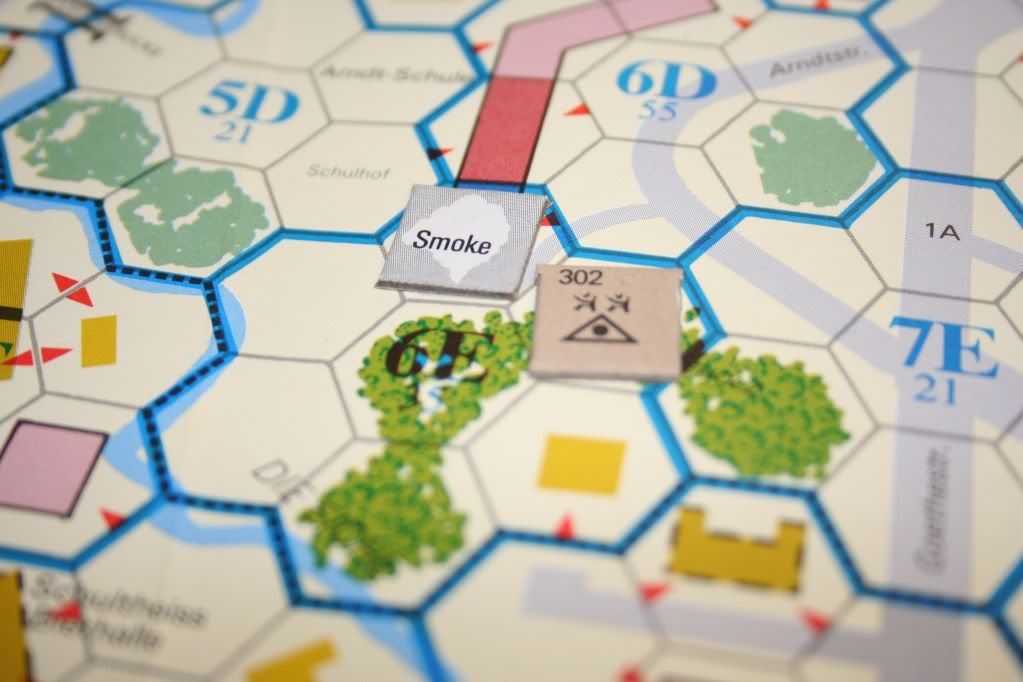
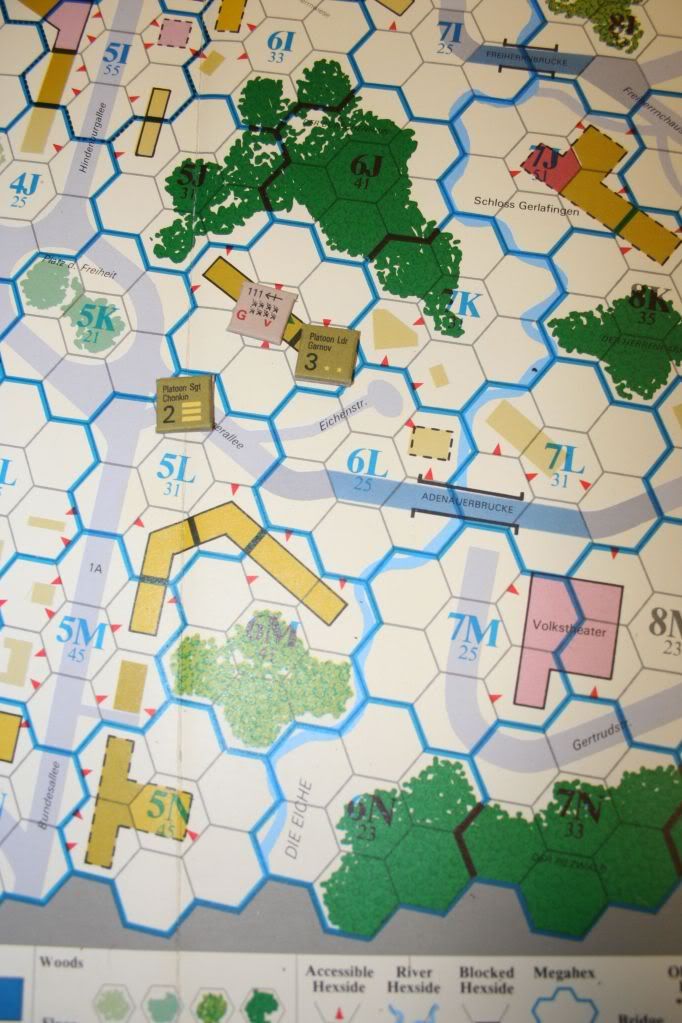


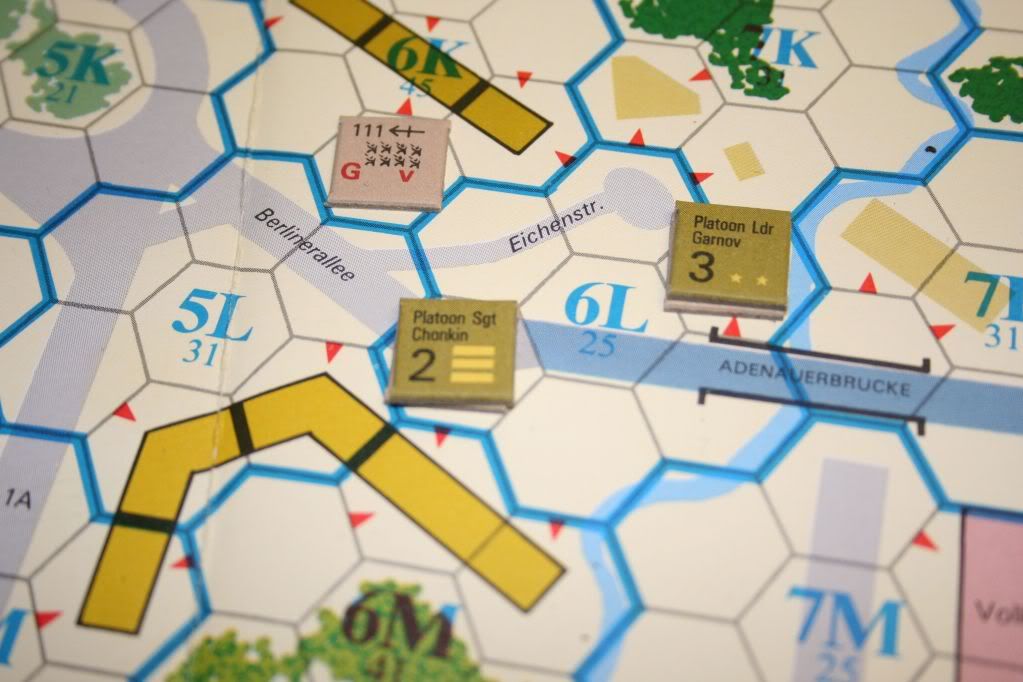
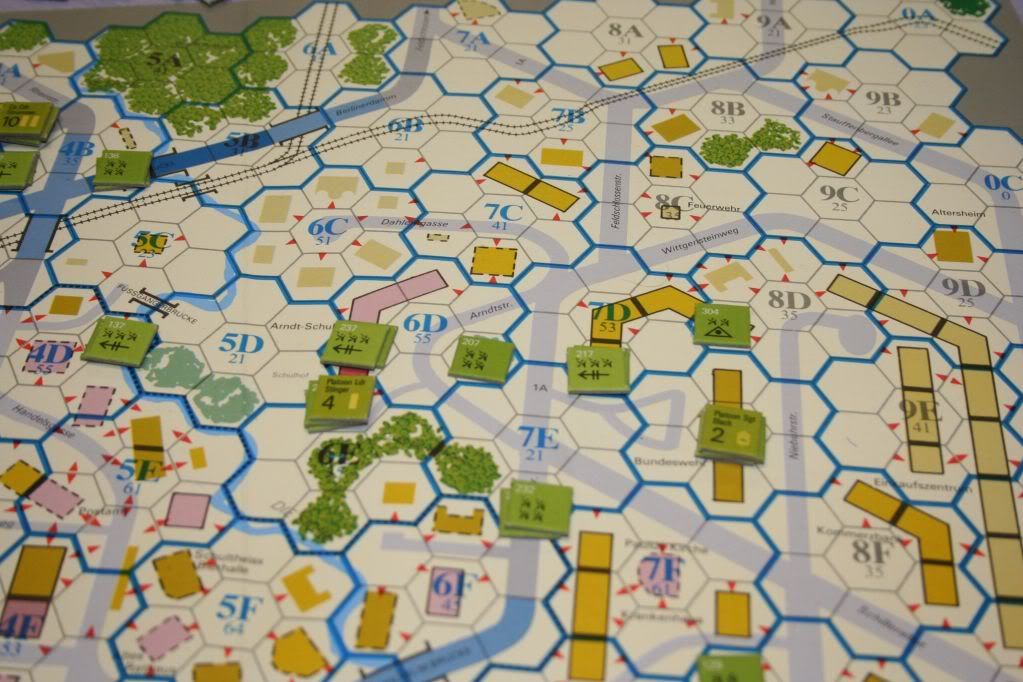
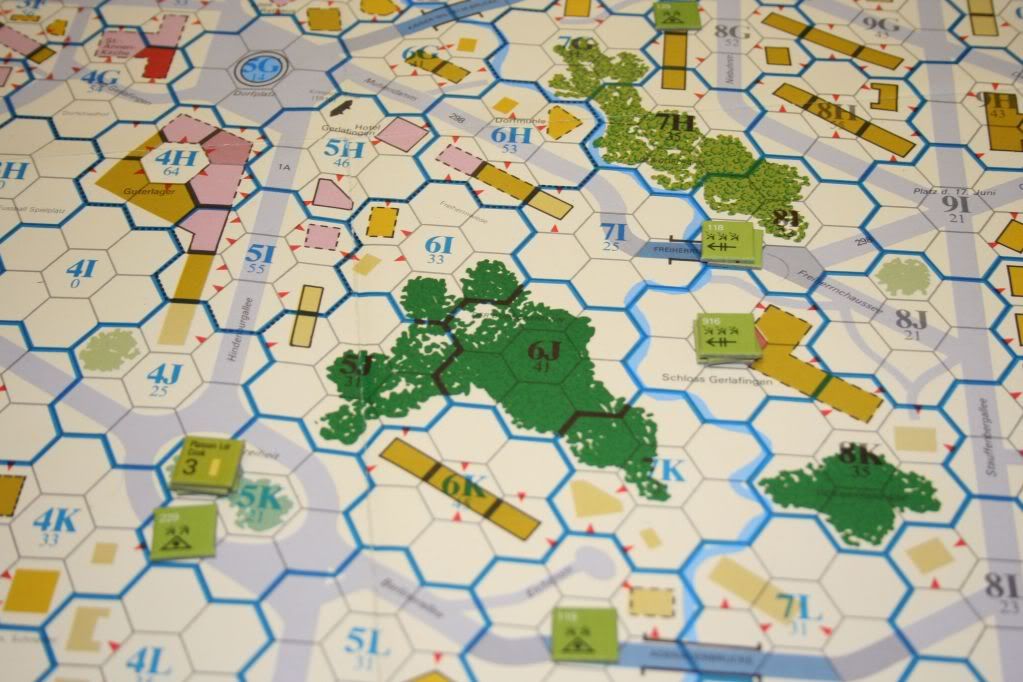
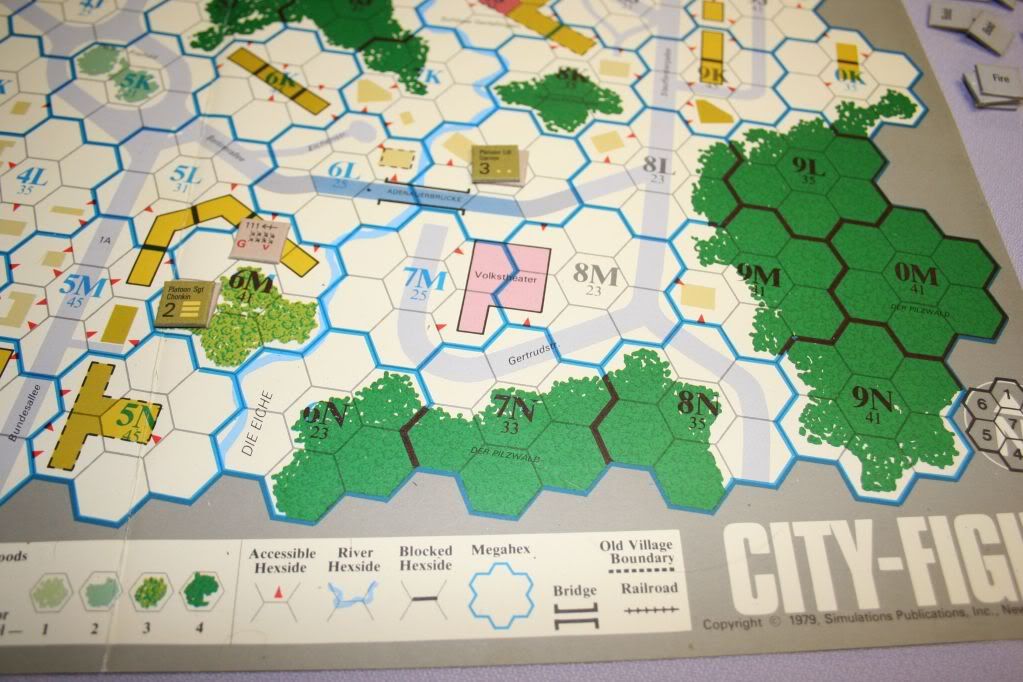
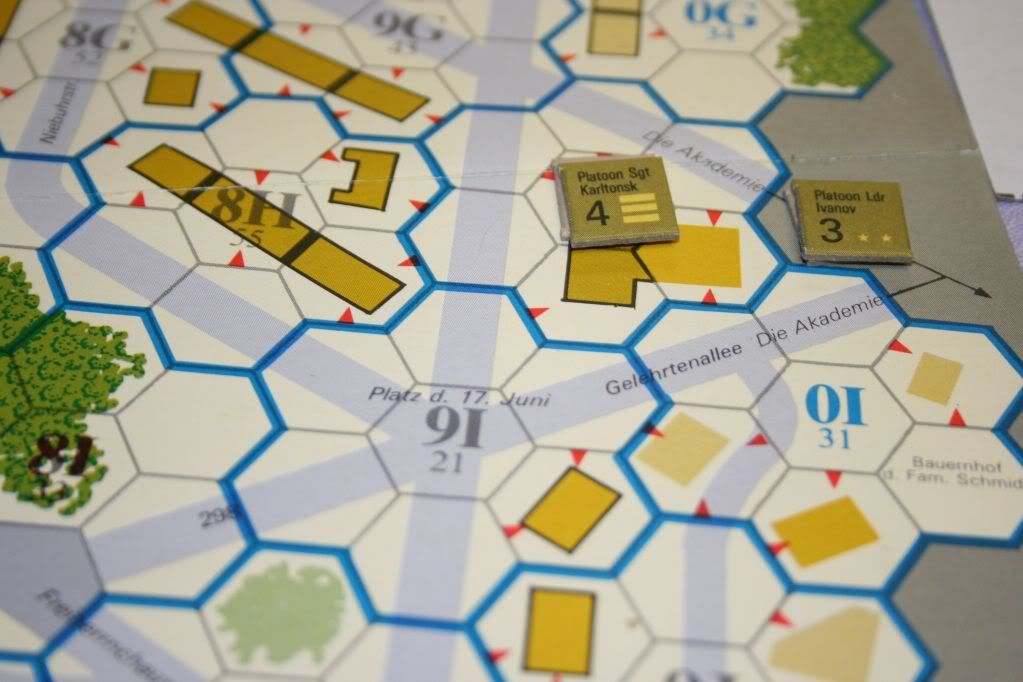
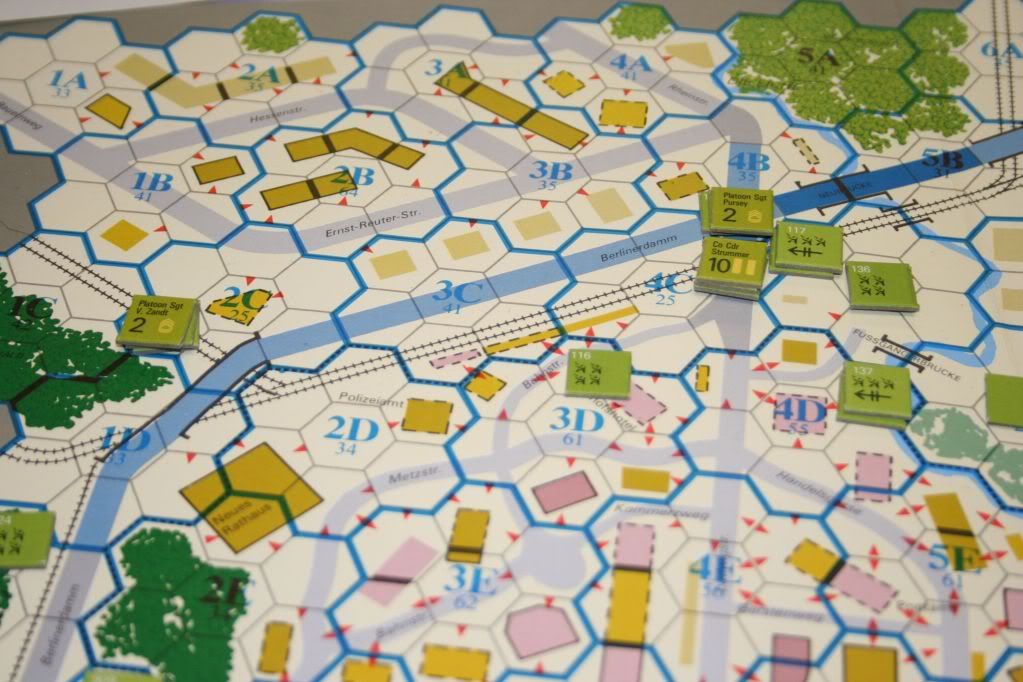
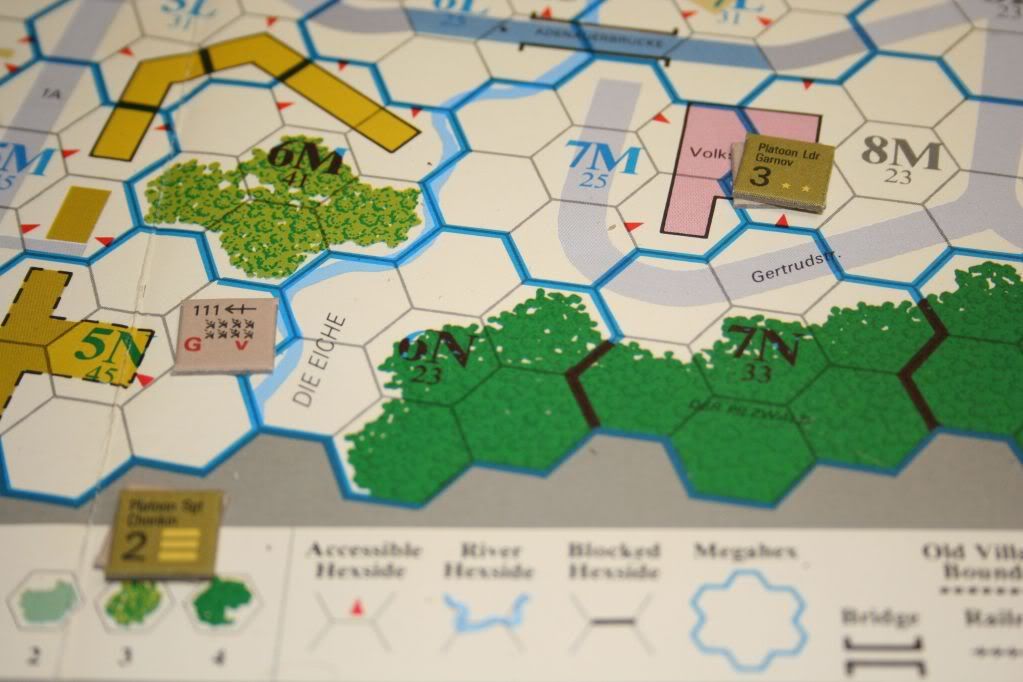

For the ultimate in realism, the US troops report that the Russians were repelled and gain 30 VPs of their own!
I had this game but ina moment of stupidity I sold it last year for 20 bucks, now I want it again ;(